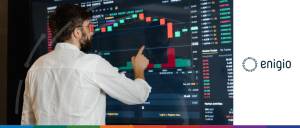The financial services industry is constantly changing, and the pace of change is accelerating rapidly, especially for the payments sector. The industry has witnessed many shifts: from the barter system to cash, from cheques to cards, and from cards to digital banking and payments.
If we look at the customer journey, we can see a massive improvement. Payments are now faster, more efficient, and more inclusive than ever before, with customer preferences being the primary driver for modernisation.
Once again, the payments industry is at a crossroads. The competition is fierce, many new players have entered the payments arena, and there are many tech advances and regulatory changes. It has become crucial for financial institutions to invest in more robust payments capabilities.
Real-time payments, payments automation, and cross-border payments are just a few examples. Financial institutions must adapt to changes and embrace opportunities that are here already, such as Open Banking, Open Finance, and Instant Payments. One major development that underpins a lot of payments innovation is ISO 20022, and banks need to adapt to stay ahead of the curve.
What is ISO 20022?
ISO 20022 is a new open global standard for financial information that facilitates interoperability between financial institutions, market infrastructures, and the banks’ customers through a common language.
Besides cross-border payments, there are many domestic real-time gross settlement (RTGS) schemes migrating to ISO 20022 in the following years, this being the most significant migration to a new standard. The move from the pervasive MT formats standard to ISO MX, a consistent messaging standard, allows for the transporting of richer data sets.
ISO 20022 benefits: Harnessing the potential of enriched data
Users will have access to harmonised formats that enable cross-cooperation and increase the interoperability scope between different market infrastructures. The migration brings major benefits: transparency, reduced risk, and improved fraud prevention.
Seizing the opportunity means banks gain more capabilities to automate processes, and more efficient payments thanks to enhanced straight-through processing. In addition, thanks to the ISO 20022 data dictionary, the data model can be reused for other key industry programs, such as API development.
One of the major benefits of ISO 20022 is having a clear view of the payment lifecycle. Using ISO 20022, we can see the purpose of payment, the original source, who the beneficiary is, and relevant additional data. Understanding and categorising these transactions can provide better reconciliations for financial institutions. This enhanced view offers greater accuracy and increases operational efficiency.
Having robust data can bring a better understanding of customer behaviour, leading to a more personalised customer experience. Granular data will enable financial institutions to build better services and tailor different products based on deeper insights into what their customers want and need.
Having greater access to rich data also helps businesses make credit decisions. Traditional methods of credit scoring often exclude large groups of people who do not have the same spending habits or credit files, even if they are able to comfortably repay a loan. With ISO 20022, financial institutions can gain access to a wider range of datasets that can build a better picture of a customer’s “true” creditworthiness.
For example, sources such as rent payments could be used for underwriting a mortgage loan. It’s one example of how payment data can remove the roadblocks some customers encounter while accessing finance. Access to rich data also means gaining valuable insights regarding customer needs and guiding them along the way.
At the same time, access to more data can also help identify risks and protect institutions against fraud, financial crime and fines resulting from non-compliance. Consistent data tracking can streamline and improve Anti Money Laundering (AML) processes.

A bumpy road ahead
By November 2025, payment systems and any other connected back-office systems processing SWIFT FIN messages need to be ISO 20022 compliant, or a permanent translation solution must be implemented. The clock is ticking, and delaying the process can be dangerous.
Three transition models are available: the translation model, the complete overhaul model, and the hybrid model.
- Translation model: There are entire payment data models built on the MT standards, and this first approach involves translating incoming MX messages to the MT format and vice versa for outgoing messages. This is a less disruptive approach that requires a lower upfront cost. However, it can lead to heavy dependence on third parties and less interoperability. The lack of an ISO-native data model means that some banks won’t have access to the data insights and will miss out on high levels of automation. The conversion can also cause data truncation, leading to regulatory breaches in compliance, AML, and fraud areas.
- Complete overhaul: Secondly, the complete overhaul model requires a wholesale architecture transformation based on the latest payments and accounting systems. This approach can help financial institutions harness rich data and leverage new insights on the market and customers. Naturally, this approach can be disruptive and requires a heavy upfront investment. However, financial institutions can select ISO 20022 native platforms that fully leverage robust data and enhance straight-through processing, while giving access to insights via payment analytics. Banks need solutions that are quick to deploy and protect their existing payment engines and core banking from the impact of the transformation. These solutions can also offer several value-added services based on the ISO 20022 catalogue and can be easily integrated with the bank’s customer-facing channels via out-of-the-box APIs.
- Hybrid model: This approach involves translation in some markets and complete overhauls in others. This approach can bring higher flexibility and the ability to localise a strategic response. However, the hybrid model can also lead to increased complexity.
Many current systems are unsuited for rich data formats or don’t allow the use of a translating tool. According to the study conducted by Aite-Novarica Group, in partnership with Finastra, ISO 20022 will only be adopted by many banks if mandated, especially smaller and mid-size banks, because of the challenges around adoption.
The study also explored the creation of proprietary requirements, with 60% of respondents outlining the potential for banks to create proprietary fields. Other challenges mentioned were the ability of businesses to consume the data (55%), navigating legacy applications not designed for XML (47%), and the need for the parallel running of MT and MX (31%).
Even with these challenges, banks are already considering the complexities of these transition models and the rigorous timelines, and are taking this opportunity to rethink their end-to-end payments services.
This is a momentous occasion for banks to reach beyond compliance, embrace new data insights, and deliver revenue-generating opportunities. It is also an opportunity for collaboration; banks can join forces with fintechs to make this transition as seamless and fruitful as possible.
This new standard is a significant step forward for the payments value chain. Many companies have already adopted it, and this shift will continue to unfold over the following years. The widespread adoption will create a more cohesive payments ecosystem, and standardisation will facilitate innovations, enhance risk management, and improve the customer experience.























